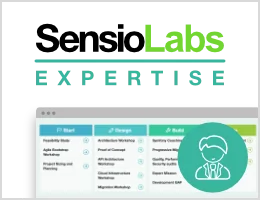HiddenType Field
Warning: You are browsing the documentation for Symfony 2.x, which is no longer maintained.
Read the updated version of this page for Symfony 7.0 (the current stable version).
The hidden type represents a hidden input field.
| Rendered as | input hidden field |
| Overriden options | |
| Inherited options | |
| Parent type | FormType |
| Class | HiddenType |
Overridden Options
compound
type: boolean default: false
This option specifies whether the type contains child types or not. This option is managed internally for built-in types, so there is no need to configure it explicitly.
Inherited Options
These options inherit from the FormType:
data
type: mixed default: Defaults to field of the underlying structure.
When you create a form, each field initially displays the value of the corresponding property of the form's domain data (e.g. if you bind an object to the form). If you want to override this initial value for the form or an individual field, you can set it in the data option:
1 2 3 4 5 6
use Symfony\Component\Form\Extension\Core\Type\HiddenType;
// ...
$builder->add('token', HiddenType::class, array(
'data' => 'abcdef',
));Caution
The data option always overrides the value taken from the domain data
(object) when rendering. This means the object value is also overriden when
the form edits an already persisted object, causing it to lose its
persisted value when the form is submitted.
error_mapping
type: array default: array()
This option allows you to modify the target of a validation error.
Imagine you have a custom method named matchingCityAndZipCode() that validates
whether the city and zip code match. Unfortunately, there is no "matchingCityAndZipCode"
field in your form, so all that Symfony can do is display the error on top
of the form.
With customized error mapping, you can do better: map the error to the city field so that it displays above it:
1 2 3 4 5 6 7 8
public function configureOptions(OptionsResolver $resolver)
{
$resolver->setDefaults(array(
'error_mapping' => array(
'matchingCityAndZipCode' => 'city',
),
));
}Here are the rules for the left and the right side of the mapping:
- The left side contains property paths;
- If the violation is generated on a property or method of a class, its
path is simply
propertyName; - If the violation is generated on an entry of an
arrayorArrayAccessobject, the property path is[indexName]; - You can construct nested property paths by concatenating them, separating
properties by dots. For example:
addresses[work].matchingCityAndZipCode; - The right side contains simply the names of fields in the form.
By default, errors for any property that is not mapped will bubble up to the
parent form. You can use the dot (.) on the left side to map errors of all
unmapped properties to a particular field. For instance, to map all these
errors to the city field, use:
1 2 3 4 5
$resolver->setDefaults(array(
'error_mapping' => array(
'.' => 'city',
),
));mapped
type: boolean default: true
If you wish the field to be ignored when reading or writing to the object,
you can set the mapped option to false.
property_path
type: any default: the field's name
By default form fields read from and write to the properties with the same names
in the form's domain object. The property_path option lets you define which
property a field reads from and writes to. The value of this option can be any
valid PropertyAccess syntax.
If you wish the field to be ignored when reading or writing to the object
you can set the property_path option to false, but using
property_path for this purpose is deprecated, you should use the
mapped option.

